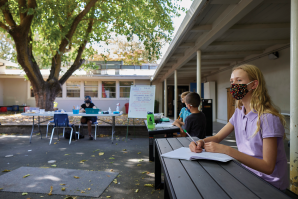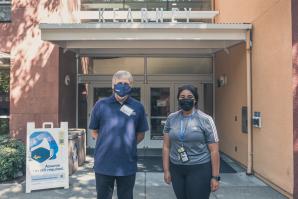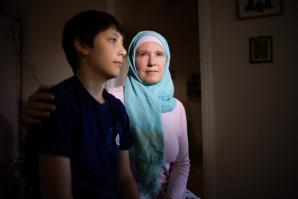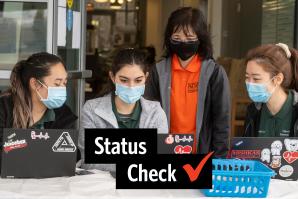Last week at Simi Valley Unified School District, northwest of Los Angeles, there were only enough substitutes to cover about half the teachers who stayed at home after testing positive for COVID-19. “It’s untenable,” Superintendent Jason Peplinski said last week. “It is so bad.” The good news is that public health experts across California expect the omicron surge to be over by March. But the consequences of the highly transmissible variant and the acute school staffing crisis it has caused could long outlast the spike in case numbers. The teacher shortages and unprecedented absenteeism are disrupting learning, extending the long-term academic fallout of COVID-19. “But what’s a teacher to do when she has half of her class gone?” Peplinski said. “Do you just keep teaching long division and hope the class will catch up?” COVID-19 infection rates among students and staff are at all-time highs at many school districts. At Simi Valley Unified, positivity rates among students went from below 1% to 6.5% in the past month. Just in the past two weeks at school districts across California, the numbers of positive COVID-19 cases have tripled over what they were before omicron. Monica Gandhi, a professor of medicine at UC San Francisco, said public health experts expect that the number of omicron cases will taper off in a month. She said wastewater testing in San Francisco has already shown a decline. “We’re all praying everything gets better by the end of February,” she said. “That’s the hope.” But until then, schools will need to endure previously unimaginable staff absences. Teacher shortages plagued California even before 2020. The pandemic amplified the shortage, and omicron brought it to a breaking point. While many teachers have tested positive for COVID-19 and are required to quarantine, a minority of teachers have actually become extremely sick — creating a lot of mixed feelings among teachers over school closures. At Rosa Parks Elementary in the San Diego Unified School District, a third of teachers were out in the first week of January, according to school board president Richard Barrera. Across the district, about 15% of employees were out on any given day since the school year resumed after the winter holiday. “With all due respect to the governor, that doesn’t solve a Monday problem. That solves a five-weeks-from-now problem. That’s a joke.” jason peplinski, superintendent, Simi Valley Unified School District At Simi Valley Unified, the district jacked up pay rates for subs from $110 to $205 a day in early January to prepare for the spread of omicron, but it hasn’t made much difference. Gov. Gavin Newsom last week issued an order removing obstacles to credentialing and retaining substitute teachers — measures that district Superintendent Peplinski called well-intentioned but “laughable.” “With all due respect to the governor, that doesn’t solve a Monday problem,” he said. “That solves a five-weeks-from-now problem. That’s a joke.” As some school districts have already closed down schools, Gov. Newsom suggested last week that theymight have to extend their school years to make up for lost time. A spokesman for the governor, however, clarified that Newsom was not proposing extending school years as a statewide strategy. Hayward Unified in the Bay Area reopened campuses on Tuesday after a week of mostly remote instruction. The district did have six in-person “learning hubs” for students who weren’t able to participate in virtual learning. Dionicia Ramos, a spokesperson for Hayward Unified, said that district officials don’t anticipate needing to extend the school year to recover any lost days of instruction. At hard-hit high schools in California — including within Sacramento City Unified, San Diego Unified and Simi Valley Unified — classes are being combined and relocated to gyms or auditoriums, raising concerns about enforcing safety protocols. “At least two to three classes are being put together with one or two teachers,” said Kisha Borden, president of the teachers’ union at San Diego Unified. “You can’t adequately supervise over 100 kids.” In districts across the state, a single teacher might be supervising three or four classes in larger spaces to allow for physical distancing. Students receive little to no instruction, according to both administrators and teachers. Teaching becomes virtually impossible with such a medley of subject-based classes. “What do you teach when you have so many kids from other classes?” Borden said. “Are you constantly re-teaching? Do you want to introduce new subjects?” “At least two to three classes are being put together with one or two teachers. You can’t adequately supervise over 100 kids.” kisha borden, Teacher’s union president, san diego unified The California Teachers Association President E. Toby Boyd in early January said the state’s teachers union remains committed to keeping schools open, but he called on the state to provide high quality masks, rapid tests and extra sick days for teachers. While the students who come to school benefit socially from being around teachers and their classmates, the rampant loss of instructional time is reminiscent of the early months of the pandemic. Robin Shugars, a special education teacher at Hiram Johnson High School in Sacramento, had all but one of her students out last week after her other students, who all take the same bus to school, tested positive. “It’s difficult to conduct a lesson with most of the students out,” said Shugars. “Those students aren’t going to get the help they need.” School districts that hired more teachers and counselors in 2021 to help students recover from the academic and mental-health tolls of distance learning now must reroute those resources to deal with the acute staff shortage. “We hired these people to help accelerate learning,” said Christine Walker, superintendent of Hueneme Union School District near Long Beach. “Now they’re working as substitutes.” Peplinski said the state should’ve “hit the pause button” before students returned to schools in early January. He said it would have been wise to delay the start of school for a week to help school district leaders readjust to skyrocketing case numbers. But now districts might not have any other option but to temporarily close campuses. Late last week, San Diego Unified released guidelines and metrics the district would follow for determining when to shut down a school. “We definitely want to do a school-by-school approach,” said school board president Barrera. “The schools are in very different places.” Under San Diego Unified’s guidelines, schools can close for “COVID Impact Days” if a principal determines he or she cannot safely supervise all students due to staffing shortages. Students will stay home as they do on heat and smoke days, when being outside is unsafe. “We’re stretched to the limit, but we’re doing it. Can we maintain this for a long time? Probably not.” alyssa walton, special education teacher, grant tk-8 in san diego At West Contra Costa Unified, the district repurposed two emergency smoke days typically used for wildfires last week to close schools while COVID-19 cases surged. A school district in a fire-prone area might allot multiple days into its academic calendar in case of emergency. Districts aren’t penalized for these days as long as they provide a total of 180 days of instruction in a school year. But additional school closures could come at a high cost for districts. If students aren’t on campus, they can’t be counted towards a district’s attendance record, unless they’re placed in independent study. Lost attendance means less funding for school districts, and adding instructional days to the academic year would need to be bargained with local teachers unions and raise a slew of logistical problems. “We know that one of the options would be to close school and add on days later,” said Walker. “We don’t want to do that to our families and communities. People have their calendars set.” But there’s the more fundamental question of whether schools should close or if they should just weather this crisis and keep students on campus, no matter how low attendance rates and staffing levels drop. Some teachers say that although the current situation is far from ideal, it’s much better than returning to distance learning, especially for high-needs students like those with disabilities. “We’re stretched to the limit, but we’re doing it,” said Alyssa Walton, a special education teacher at Grant TK-8 in San Diego. “Can we maintain this for a long time? Probably not.” Gandhi, the UCSF professor, said the state needs to prepare for COVID-19 to become a routine part of life, like the seasonal flu. Closing down schools now could set a precedent for future winters when COVID-19 case numbers inevitably spike again. “I’m worried in states like California when we have more respiratory pathogens every winter, that schools will be the places that close,” she said. Considering the academic and mental health harms of closing down schools in 2020, she said keeping schools open and learning how to weather COVID-19 spikes is worth the risk. “I think of all the essential services a society provides, schools are the most essential,” she said. “Even during surges.”Learning lost, again
Is closing schools a viable option?
Adapting to COVID-19
CalMatters.org is a nonprofit, nonpartisan media venture explaining California policies and politics.
–
Stay up to date on business in the Capital Region: Subscribe to the Comstock’s newsletter today.
Recommended For You

Considering the Alternative
Capital Region schools navigate increased instruction options during uncertain times
Though it’s not been without growing pains, the past year and a
half has brought together parents, teachers and legislators to
expand educational options.

Capital Region Schools Coping With COVID-19
Here is a rundown of COVID-19 mitigation efforts at some public
school districts, colleges and universities in the Capital
Region.

Mothers Struggle to Return to Work As California Reopens
Moms who lost their jobs during the pandemic are still shouldering most of the child care.

Status Check: University of the Pacific Reopens After Major Changes
The University of the Pacific’s three campuses in Stockton, Sacramento and San Francisco have reopened — with COVID-19 vaccinations required.

Please disable your ad blocker.
We use paid advertising to support the delivery of free content on our website. Please support our small business and independent publishing by disabling your ad blocker in order to view this page. Thank you!


